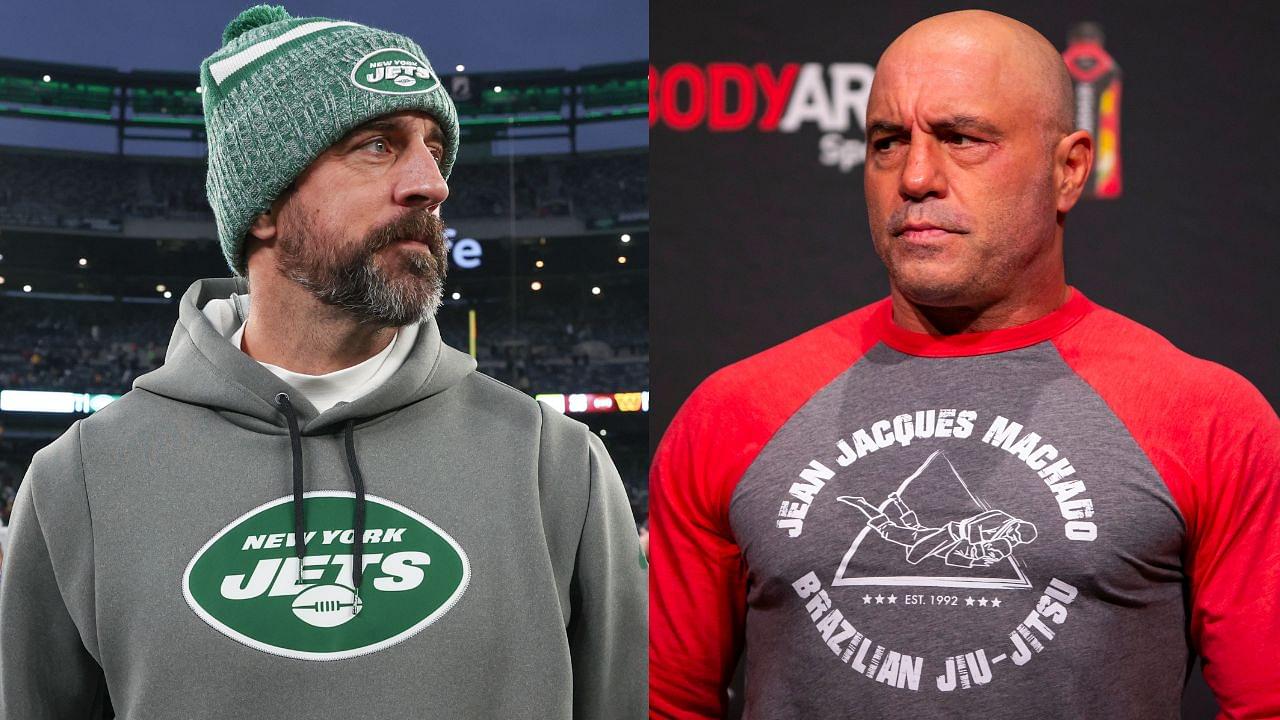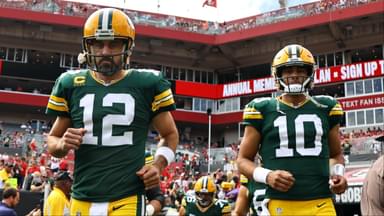After spending 18 seasons with the Green Bay Packers, Aaron Rodgers made a shocking switch to the New York Jets. The move has unfortunately turned out to be a nightmare for both parties, with Rodgers getting sidelined from an Achilles tendon rupture in his debut game against the Buffalo Bills. The diagnosis ruled him out indefinitely with the QB aiming for a mid-January return. However, he was surprisingly taken off the injured reserve in the third week of December owing to a fast recovery.
Advertisement
The 4-time NFL MVP was able to fast-track his recovery to 77 days thanks to an arduous rehab routine. In the 2099th episode of The Joe Regan Experience, the NY Jets QB revealed that he put in extra hours and techniques on his road to recovery. For starters, Rodgers’ surgeon developed a lesser-tried innovative process for rehabilitation.
A-Rod also sped up the process by spending time in the Hyperbaric chamber — a form of therapy used to reduce inflammation in the cells. Rodgers’ diet also consisted majorly of collagen-level-increasing anti-inflammatory food items. The QB’s diet was therefore dominated by bone broth.
“And I really attacked the rehab the first few months and kind of wanted to go as hard as I could for two months… I said you know let’s push this as hard as I can,” A-Rod said. “Worked really really hard, I had a great surgeon who did a newer process… Did a lot of other things to speed up the rehab including Hyperbaric chamber, my diet was rock solid: a lot of bone broth to increase the collagen levels to increase healing.”
Rodgers’ rehab routine is truly impressive and noteworthy. His revelations in the podcast have been the talk of the town, with many now curious about the severity of Rodgers’ injury. Here is all you need to know about an Achilles injury.
What Is an Achilles Injury? How Did Aaron Rodgers Get Injured?
The Achilles tendon is a sturdy fibrous chord that acts as a connecting tissue between the heel bone and the back of your calf. The chord plays a vital role in mobility as it is the vital piece in directing movement from the leg to the foot. From flexing your toes to tip-toeing to ankle movement, the Achilles tendon plays a huge role. A tendon generally gets ruptured when there is an excessive weight load on it or a sudden jerky movement caused by running or jumping. Once ruptured, the pain is stabbing at the back of your ankle and is often repaired by surgery.
According to a former sideline physician for the Jets, Dr. Robert Glatter, the main cause of Rodgers’ injury was his age and position. Men are 5 times more likely to suffer an Achilles injury than women. Moreover, statistics report that most Achilles injuries are recorded between the ages of 30 and 40.
Dr. Robert also reasoned that Leonard Floyd’s sacking came at a time when Rodgers’ heel and foot were positioned upwards. Lastly, Rodgers, in an interview with Pat McAfee, also revealed that he “had popped my calf a few times.” Combining all these factors led to Rodgers’ injury.
View this post on Instagram
Rodgers’ long-term Packers teammate David Bakhtiari blamed the artificial turf for the QB’s injury. However, Dr. Glatter revealed that it’s “unclear” to point at the turf as the cause.
However, long-term data collected since 2015 shows that more injuries have occurred in synthetic fields than in natural grass fields. All said and done, Aaron Rodgers miraculously recovered from the rupture in just 77 days. To put things into context, an average athlete takes 9-12 months to recover, with the previous outlier being Rams RB Kam Akers who recovered in five and a half months.







